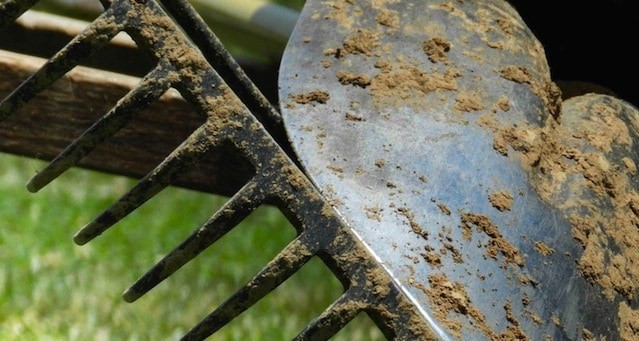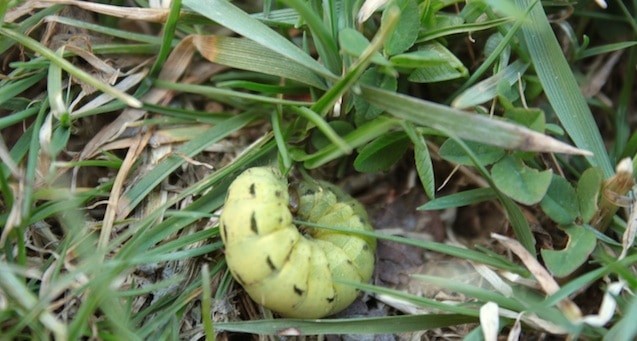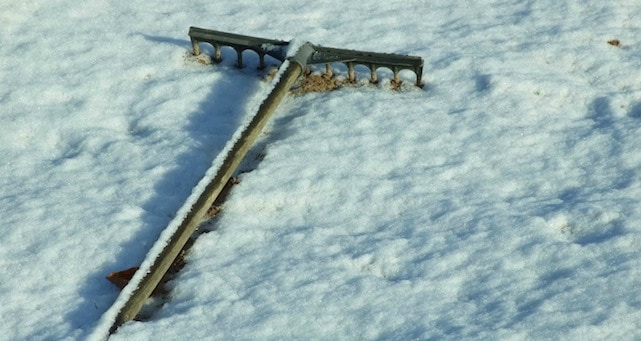Fall has arrived, which means winter can’t be far behind. Autumn is the best time to do last minute lawn preparation to ensure your lawn will be fuller and healthier in the spring. Here are some tips on fixing and preparing your yard for the winter time:
Remove leaves, rocks, and debris

Remove dead leaves, rocks and debris. Doing this, you eliminate moss, fungus and disease which hamper strong root growth in your lawn. The autumn leaves you collect can be put to good use. Create mulch or break it down in your compost. Another good idea is to save them for spring, when brown leaves with their high carbon are hard to come across. Remember, one person’s trash can also be their treasure.
Give your lawn some breathing room

Using a spading fork or a core aerator, poke holes into the ground. This, helps break down thatch and allows for better irrigation and deeper grass root growth, which protects them from the cold. If you don’t own one, many companies can help you for an affordable fee. Finally, fill the holes using fine horticultural grade sand, which lets a greater amount of water and air through.
Overseeding and fertilizing make for a greener lawn next year
 A soil test is an exact way to find out what nutrients your lawn needs. Although when one isn’t available, you can use fertilizer with a high nitrogen level to control overgrowth and low-to-moderate potassium to promote root growth. Together with overseeding, these are two steps that will make sure you will have a thicker and stronger lawn next year. This will take care of dry patches and leave no space for new weeds to grow.
A soil test is an exact way to find out what nutrients your lawn needs. Although when one isn’t available, you can use fertilizer with a high nitrogen level to control overgrowth and low-to-moderate potassium to promote root growth. Together with overseeding, these are two steps that will make sure you will have a thicker and stronger lawn next year. This will take care of dry patches and leave no space for new weeds to grow.
Mow and Water, but just enough

It’s best to water lightly allowing the lawn to be moist, but never waterlogged. As for mowing, cut enough to leave the shoots with a two to three inch length. Your clippings are strong source of nitrogen and protection, but try to limit their use for composting. A good rule of thumb is mow until you notice the rate your grass is growing has slowed.
Where’s the grub?

It’s recommended taking care of grubs in autumn since they are small and easier to get rid of. Deal with them easily with beneficial nematodes. What are they? Microscopic organisms that quickly spread through your lawn devouring larvae and other pests. Also remember that while some pruning is necessary for some plants, others don’t need it. Regardless, you must completely remove dead branches so that pests have nowhere to run and hide during winter.
Enjoy your lawn next year!

It might seem like hard labor at first, but the truth is once you take these steps you’re saving yourself from a lot of work next year. Remember the thicker your grass, the less room for weeds, and the healthier your yard will grow.
For more information on landscape grading and other landscaping advice, you can contact us by email or by phone and we will be more than happy to help you out.

